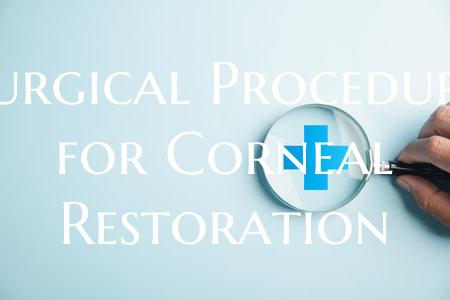
Surgical Procedure for Corneal Restoration
Corneal restoration procedures are a vital aspect of ophthalmic surgery, aimed at improving vision and providing relief from various eye conditions. The cornea, the transparent outer layer of the eye, plays a crucial role in focusing light onto the retina, and any damage or abnormalities can have a significant impact on vision. Surgical interventions for corneal restoration are designed to repair, replace, or reshape the cornea, ultimately improving visual acuity and overall eye health.
One common procedure for corneal restoration is corneal transplant surgery, also known as keratoplasty. During this procedure, a damaged or diseased cornea is replaced with a healthy donor cornea to restore vision and alleviate symptoms. There are different types of corneal transplants, including penetrating keratoplasty, where the entire thickness of the cornea is replaced, and lamellar keratoplasty, which involves replacing only specific layers of the cornea.
Another innovative surgical technique for corneal restoration is collagen cross-linking. This procedure is often used to treat keratoconus, a progressive condition that causes the cornea to thin and bulge, leading to distorted vision. Collagen cross-linking involves applying riboflavin (vitamin B2) eye drops to the cornea, which are then activated by ultraviolet light to strengthen the collagen fibers and stabilize the cornea.
In cases where corneal scarring or irregularities affect vision, phototherapeutic keratectomy (PTK) can be performed to remove abnormal tissue and smooth out the corneal surface. This laser-based procedure can help improve vision and reduce discomfort associated with certain corneal conditions, such as corneal dystrophies or scars from injury.
Refractive surgeries, such as photorefractive keratectomy (PRK) or laser-assisted in-situ keratomileusis (LASIK), can also be considered as part of corneal restoration for patients with refractive errors like myopia, hyperopia, or astigmatism. These procedures reshape the cornea to correct refractive issues and reduce the need for glasses or contact lenses.
Overall, surgical procedures for corneal restoration are tailored to each patient's specific condition and visual needs. By addressing corneal abnormalities, damage, or refractive errors through advanced surgical techniques, ophthalmologists can significantly improve the quality of life and visual outcomes for individuals seeking to restore their vision.